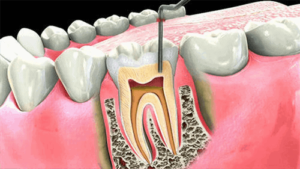Do You Have Infected Or Decayed Teeth That Need Treatment? This Is What Will Happen.
The purpose of root canal treatment is to save or repair a tooth that has been infected or decayed. Should your tooth be in this position, your dentist may recommend root canal treatment. Without treating the infected or decayed tooth, the tissue will weaken and become affected, developing abscess. There are many forms of root canal treatment that can be performed upon dentist recommendation, and typically the procedure for all types of treatment are performed the same, dependent on the severity of your condition.
If you’re about to begin root canal treatment or have been booked in for an appointment, to help you prepare for it, here’s what to expect:
Before treatment begins, a full medical evaluation is performed. Your dentist should firstly complete all necessary paperwork relating to your medical history to understand the current state of your teeth, including an examination of your affected tooth.

Root Canal Treatment begins by first applying local anesthesia to numb the tooth area. This is typically done using a needle and a sheet of rubber is placed to isolate the tooth and keep it clean and dry during the procedure.
Removing the Infected Pulp. The infected tissue (or pulp) needs to be removed completely to avoid the chance of it becoming infected again in the future. When the tooth’s nerve tissue is damaged, the bacteria are broken down which could cause an abscess, which in turn can lead to bone loss. Deep decayed is a typical symptom of your tooth’s nerve damage.
The root canal is enlarged for easier filling once the pulp is removed. Initially, the root canal is difficult to fill, and the dentist will attempt to enlarge the canal. You will be required to use antibiotics should you suffer any symptoms from the procedure such as swelling or temperature.
This would typically conclude your first visit to the dentist. Upon the second appointment, the temporary filling is removed, and the root canal filling is inserted. The tooth is sealed at this point and avoids any danger of reinfection.
A crown shaped for the size of your tooth and is placed accordingly. Cement is used to glue the crown to complete the treatment.

Post-Root Canal treatment, the canal area, and surrounding teeth will be kept strong. The dentist will provide instructions on managing any pain you experience, such as soreness within your jaw. With this, you must continue to brush teeth twice a day and floss where necessary alongside regular visits to the dentist to ensure no abnormalities occur with your root canal.
If you suffer from a severely decayed or infected tooth and require root canal treatment, click here to and get in touch with Wahroonga Dental and see what we have to offer!